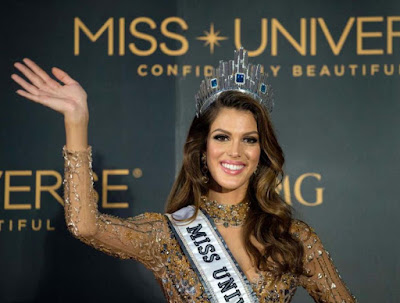Surah 4:34
In reading the essay by F.V. Greifenhagen entitled “North American Islamic Feminist Interpretation: The Case of Surah 4:34, With a Comparison to Christian Feminist Interpretation,” it is clear that once again finding a place for feminist advocacy means reinterpreting ancient texts, in this case the Qur’an and Hadith, for a modern world where gender bias and discrimination must be rooted out and at some point, decidedly defeated. Is that possible? Greifenhagen suggests it is, and he offers a full discussion of just one verse of the Qur’an to make his key points. Of course, the verse in question concerns the husbands as guardians of their wives with their size and strength advantage. The Qur’an also insists that husbands are discipliners of their wives, with an escalating series of punishments for a lack of obedience and loyalty ranging from admonishment to refusal to share a bed with the wife to outright physical abuse. Greifenhagen makes an effort to reconcile this harsh and misogynistic passage with modern Islamic feminist views.
First, the passage:
“Men have authority over women because God has made the one superior to the other, and because they spend their wealth to maintain the. Good women are obedient. They guard their unseen parts because God has guarded them. As for those from whom you fear disobedience, admonish them, forsake them in beds apart, and beat them. Then if they obey you, take no further action against them.”
The first point that immediately comes to mind in this passage is the idea that inequality, and even physical abuse, is legitimized because of physical differences, namely physical strength. In fact, it appears God condones assault of a wife by a husband. There are many harsh, violent, and even deadly acts that can be justified with dogmatic insistence. We have seen this in history over and over again. Thus, Greifenhagen responds to this misogynistic passage of the Qur’an by bringing into the discussion Islamic feminism. This feminism attempts to rectify thousands of years of inequality for Muslim women and introduces a new male-female equality for modernity. In the early formation of Islam, the world was a different place. Culturally, sociologically, Muslims of that time had a unique sensibility, and although much can be learned by studying past theological and cultural milieus, times have changed and we must also examine how modern Islam might develop a new understanding of the sexes. Women in Islam are at a disadvantage in the fight against misogyny because such discriminatory practices were part of the bedrock foundation of Islamic tradition. This is true for many religions around the globe. In fact, it is up to modern feminist Muslims to bring a new heart and soul to the faith, one that offers a place for women as equal to men.
In the case of the dictates of the passage, a woman is at a disadvantage from birth due to the man—father, brother, husband—controlling the purse strings. In many ways, economic control is complete control. Without financial resources, a woman cannot escape an abusive situation. Also, it is easy to control a woman if she is refused an education. All of this adds up to oppression, discrimination, and misogyny. Daughters in the family receive less inheritance than the sons. Why do sons receive more? Mainly, I suspicion, because a woman joins her husband’s house upon marriage whereas the son must support his family and carry on the family name. But is this a valid excuse and does it not reduce women to property like livestock?
Greifenhagen asks that readers approach the Qur’an “holistically,” meaning examining the text “within the larger framework of the Qur’an’s overall coherence, a coherence that reveals the intent of the Qur’an in universal principles rather than historical and cultural particulars.” What does this mean? Are we supposed to dump the aspects that are unsavory in a particular religion—misogyny, in this case—and only promote the positive ideals? To question a text, some feel, is to denigrate it. Therefore, the door is tightly closed for feminists to examine an Islamic text and provoke a rereading of it, much less to call into question an entire world religion’s view of women. Greifenhagen points out that translation plays a big part in how a text is perceived and understood, as well as how it might be reinterpreted for the future. With translated texts there are often passages that don’t cross the language barrier, leading to misreading and misunderstanding, but this also leaves room for questions regarding the scope and importance of the assertions contained therein. If language is multi-faceted and fluid, the interpretation of it can be as well.
Among the women who are trying to develop an Islamic liberation theology, I found most resonance in the work of Riffat Hassan. She argues Muslim society will not advance until the belief of women in subordination to men dies out. She focuses on three, erroneous yet theological assumptions made by Islamic misogynists: women were created from Adam’s rib and therefore, are subordinate to men; women caused man’s fall away from righteousness; women were created to serve man. “An overview of the overall Qur’anic perspective on women and men, especially the Qur’anic depiction of creation of woman and man, suffices to undermine these assumptions,” Greifenhagen writes.
Greifenhagen’s comparison to Christian ideas about women focus primarily on the letters of Saint Paul, specifically the passage in Ephesians 5:22-24:
“Wives, submit to your own husbands, as to the Lord. For the husband is the head of the wife even as Christ is the head of the church, his body, and is himself its Savior. Now as the church submits to Christ, so also wives should submit in everything to their husbands.”
These words are the root of patriarchy in the Christian faith. Here, again, there is a problem of cultural and theological milieu that must be considered before trying to negate or rewrite the words of Paul to reflect a more modern view of women in Christianity. In any reinterpretation of a text, the cultural context must be considered. However, that being said, Greifenhagen writes that “The strongest commonality [comparing Muslim and Christian feminists] seems to be in the use of a method of historical contextualization.”
With a passage as difficult and dangerous as surah 4:34, there is not a lot of room for a different interpretation. What is clear from Greifenhagen’s essay is that translation sometimes is ambiguous enough to leave room for reinterpretation, but this is a tenuous perch when most translations use “beat” as the ultimate punishment for disloyal and disobedient wives. Because he focuses on a North American audience, he writes about a people of the diaspora who live in countries far less orthodox. They are able to bring a more liberal approach to their interpretation of the Qur’an. Greifenhagen’s comparison to Christianity really affirms the idea that many of the world’s religions are grappling with the role of women, the view of women, even the rights of women within their congregations of the faithful. It seems that no matter how much human beings progress, they cannot escape the sexism, racism, and misogyny inherent in their culture, philosophy, theology and society.




Comments
Post a Comment